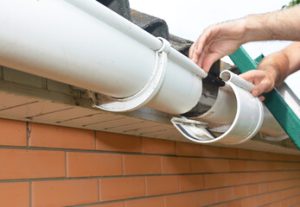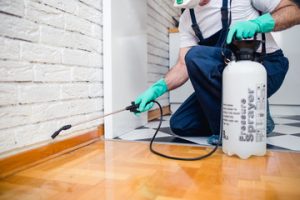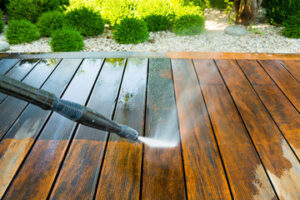A humming sound indicates that the capacitor needs replacing. Without a functional capacitor, the AC will not receive the power necessary to run properly. Inadequate cooling may also be the result of clogged air filters, low refrigerant levels, or a malfunctioning thermostat.

Repairing the existing system can be less costly than a complete replacement. Plus, repairs maintain familiarity and compatibility with the existing ductwork and wiring. Contact AC Repair Round Rock for professional help.
As with any mechanical appliance, air conditioning equipment is subject to wear and tear. It’s not possible to prevent this completely; however, there are ways to minimize the impact and extend the operational life of your AC unit. Keeping an eye out for the signs of wear and tear can help you keep your home comfortable and cool for as long as possible.
Mechanical wear and tear includes issues such as broken fan blades, clogged filters, or damaged coils. These problems can lead to poor cooling performance or even system shutdowns. By identifying and addressing these issues as they arise, you can protect your investment and save money on energy bills.
A common sign of wear and tear is a squealing or grinding sound. These noises may indicate loose belts or low lubrication, leading to decreased airflow and cooling efficiency. A professional technician can identify the source of these sounds and provide prompt solutions, extending the life of your AC unit.
Unpleasant odors from the AC unit may also be a sign of an issue. Musty odors may indicate mold or mildew growth, while burning odors could signal electrical damage. These issues should be addressed by a professional as soon as possible to avoid the need for costly repairs or replacements.
Spikes in your energy bill can also be a sign of wear and tear. A surge in energy bills indicates your AC is working harder than usual to maintain your desired temperature. A professional can check for worn out parts that are causing unnecessary strain on your system, reducing your energy costs and prolonging the lifespan of your AC unit.
Electrical issues are another common reason to call for AC repair. Problems such as power surges, voltage spikes, or faulty wiring can damage the components of your AC and cause it to wear out faster than expected. During an AC inspection and tune-up, a technician will look for these issues and make necessary repairs.
Annual maintenance, including cleanings, inspections, and tune-ups, is a must for any homeowner. These activities can help to extend the life of your AC unit, save you money on energy bills, and keep your home comfortable all year round.
Electrical Issues
The electrical components of your AC system can go bad for a variety of reasons. Fortunately, there are some things you can do to catch them early and prevent more extensive damage to your unit.
Check the Air Filter
A dirty air filter restricts airflow and forces your system to work harder. This can overheat the system and trip your circuit breaker. Regularly changing the air filter can help you avoid this issue.
Examine the Circuit Breaker
If your AC keeps tripping the circuit breaker, this may indicate a problem with the capacitor, thermostat, or wiring. If the breaker continues to trip, you should call in an electrician to troubleshoot.
Look at the Thermostat
The thermostat is what tells the compressor when to start and stop. It also provides power to the other electrical components of the unit. If the thermostat isn’t properly wired or isn’t functioning correctly, it can cause a host of problems with your AC.
Look at the Thermostat Wires
The wires that connect different components of the AC can become loose or frayed over time, due to vibration and exposure to heat and moisture. If these wires are exposed to water, they can short out and stop the flow of electricity. This can lead to serious AC failures and pose a fire hazard, so it is important to have any electrical issues dealt with promptly.
The electrical components of your AC can also be affected by power outages and storms. In these cases, the fuses and breakers inside your outdoor unit might blow, cutting off the flow of electricity. These problems usually point to more serious problems within your AC unit, and it is best to call in a professional for repairs.
Water Leaks
There are many different causes of AC leaking water, and it’s important to call in professionals to determine the exact cause. If left unchecked, persistent moisture can lead to mold growth that affects the health and comfort of your family and may damage the structure of your home.
Leaks typically occur in one of two areas: the condensation drain line or the evaporator coils. During operation, the air conditioner creates condensation that collects in the condensate pan until it overflows and spills into the evaporator coils or the drainage line. Over time, the drain line can become clogged with dirt, debris, and fungus that restricts the flow of water, leading to leaks.
The evaporator coils can also become damaged or cracked over time, leading to water leaking from the air conditioning system. The best way to prevent leaks from occurring is through routine maintenance and inspections, especially before the peak summer season when the air conditioner will be operating at full capacity under high humidity. Professional technicians will inspect and clean the ductwork, return vents, air filters, and evaporator coils to ensure optimal performance and prevent problems such as leaking.
While minor AC leaks can be fixed fairly quickly, more serious issues like extensive refrigerant leaks are a sign that the air conditioning unit is nearing the end of its lifespan and should be replaced rather than repaired. An experienced HVAC technician will be able to help you decide whether repairs or replacement is the right solution for your home.
AC Repair is complicated and requires specialized knowledge of the mechanical and electrical components of an air conditioner. An AC professional will be able to pinpoint the root cause of the problem and repair it correctly to ensure the system is running properly. AC professionals have access to a wide range of tools and equipment that are not available to homeowners, allowing them to diagnose and fix issues more efficiently. An experienced AC repair service can save you money in the long run by catching minor issues before they turn into major problems that require costly repairs or even replacement of the entire unit.
Thermostat Issues
Your thermostat is an important part of your AC system, as it controls your air conditioning’s functions. If it begins to malfunction, your cooling performance will suffer. You can identify this issue by noticing a number of signs, including inconsistent temperatures and unresponsive controls. A thermostat can also experience electrical problems and other issues that affect its function.
If you notice that your home’s temperature doesn’t match the setting on your thermostat, you should check with another thermometer to see if the reading matches. If the reading doesn’t match, you will need to adjust the settings on your thermostat and see if the problem resolves itself.
You should also look at the location of your thermostat and make sure it isn’t placed in direct sunlight, as this can overheat the thermostat and cause it to malfunction. The thermostat may also need to be cleaned, as dust can build up and interfere with its function. If you find that your thermostat isn’t responding to your settings, this could be a sign of a wiring issue that requires professional attention.
Your outdoor AC unit contains a compressor, fan, and condenser coil that work together to remove heat from your home’s air. If the compressor or fan of your system becomes damaged, it will no longer transfer heat from the air to the evaporator coil, which means that your home won’t cool down. To avoid this problem, you should regularly clean your AC unit and keep it free of debris, leaves, twigs, and dirt.
If you’re experiencing any of the signs discussed above, you should call an HVAC technician to make an AC repair appointment. Technicians have the training and equipment to handle electrical repairs, ductwork repair, refrigerant leaks, and other issues that require professional attention. They’ll follow strict safety protocols when working with your AC system and will diagnose the problem to find a solution as quickly as possible. Moreover, HVAC technicians will provide thorough inspections and cleaning services to ensure that all components of your system are functioning properly. This will help prevent further damage to your AC and improve your comfort throughout the year.



